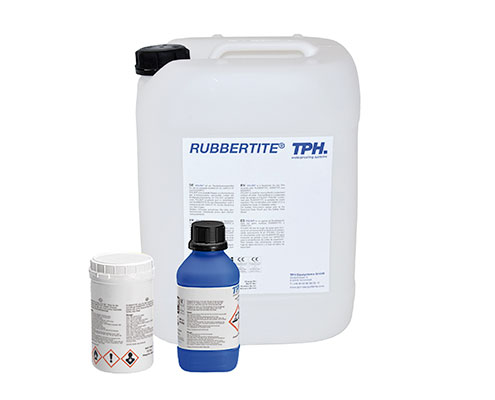
Renovation Underground Car Park, Mayen
Problem
The town of Mayen, located in the Eifel area of Germany, constructed a modern underground garage with 6 underground floors to solve the parking problem in the town centre. The structure was constructed using diaphragm walls, floor slabs and intermediate slabs were then connected to these. The intermediate slabs were supported on pillars and bearers.
The top edge of the base slab on the 6th underground floor was around -18 m below surface, the measured water level was around -8 m below surface.
During concreting of the diaphragm wall trenches, it is probable that large quantities of water and soil were incorporated in the concrete.
The 3 bottom floors showed major moisture areas and even water ingress right at the start of utilisation, which prevented commercial use of the underground car park on all floors. The diaphragm walls were 60 cm thick, the floor slab was 80 cm thick.
- Lot of faults in the diaphragm walls
- High ground water level
- No space (low ceiling)
Solution:
- Schild injection in front of wall
Injection material needs to be:
- Flexible
- Environmental friendly
- Long term consistent
Solutions
Due to the depth of the structure and the partially stony soil, solutions applied from outside were ruled out.
The underground car park operator then commissioned an engineering office to investigate the possibilities for retrospective sealing.
The only possible alternative found was a so-called “curtain injection”, in other words the creation of a solid-elastic sealing layer behind the structure.
This was to be injected between the structure and the soil by injection packer through a predetermined drilling grid.
The initially liquid 2-component injection gel was injected in a predetermined 3-stage process in order to achieve both area coverage and an interlocking spread. After the reaction, which is adjustable, a waterproof rubber-type membrane results.
In the underground floor levels -6 up to -3, this type of injection was carried out under the supervision of the engineering office.
A total of 12,000 drill holes were made and more than 17,000 L of DIBt-approved acrylic gel (RUBBERTITE) was injected. The material used for curtain injections has been subject to approval by the DIBt (German Institute of Structural Engineering) since 2008.
Recommended Product
Rubber-elastic, 3 C acrylate gel, multi purpose applicable
- Very low viscous acrylate gel with high flexibility
- Very good penetration, even in water filled cracks
- Long term stable. Proven stability of at least 16 years

